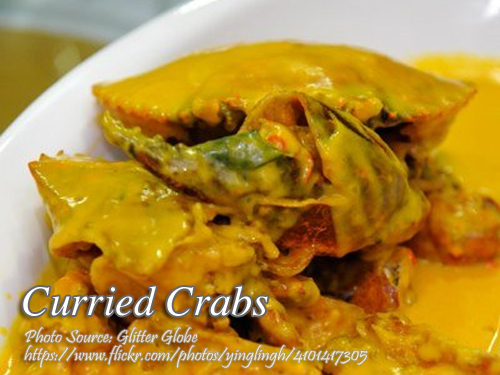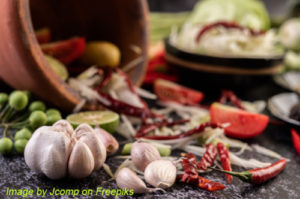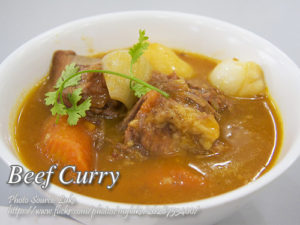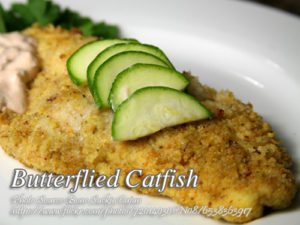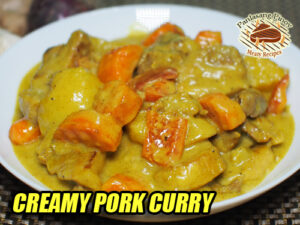Curried crabs recipe is very similar to chicken curry where there is curry powder and coconut milk. Actually curry powder is a combination of several spices. It is a mixture of turmeric, coriander, cummin, chili, fennel and fenugreek. Other spices that are sometimes included are ginger, mustard, cloves, cardamon, allspice, mace, mustard and pepper.
Curried Crabs: A Family Tradition of Flavors and Comfort
Food is life in a family that gathers around it. All our meals are a kaleidoscope of traditional Filipino dishes, sometimes with an adventurous twist or two. Among my fondest childhood memories is my Uncle Tito Ben’s famous curried crabs-a dish that is always present at our family reunions in Cavite. Every time he came out with that big pot, steaming with the very delicious aroma of coconut milk and curry spices and fresh crabs, we knew we were in for a treat. Not just the richness of flavors but the memories and stories it conjures up within every single bite.
Indeed, seafood is often a staple in the menu of many Filipino households, especially in coastal provinces such as where my mother grew up. The local markets were always full of fresh catches, and crabs were never scarce. Whenever my sister Liza visited our relatives in the province, she never failed to bring back the freshest crabs from the wet market, perfect for this rich and flavorful dish. The smell of the sea blended with the earthiness of the curry spice never fails to take me back to those days of laughter-filled meals and overflowing plates.
The Magic of Coconut and Curry Spices
This crab dish is basically a celebration of two key ingredients: curry powder and coconut milk. Curry powder is such a beautiful mix that it can be many different tastes, depending on who made it or where you’re from. My uncle always told us that the highest curry secret is getting all four together in a balance of flavors: the turmeric; the cumin; the coriander; and chili powder, with each and every spice bringing its own character. For example, turmeric is what makes the dish bright yellow, and cumin adds earthy depth to cut the richness of crab.
Coconut milk-or gata, in our ?? terminology-adds that signature creamy texture with subtle sweetness that complements the curry powder so well. And then they cook them together, taking a sauce that coats each bit of crab in the most alluring way of making this richly flavorful dish. I remember my mom telling me that this combination is also commonly used in other Southeast Asian cuisines; it just shows how interconnected our culinary traditions are with our neighbouring countries.
A Gentle Simmer for Maximum Flavor
One technique Uncle Tito Ben swears by is that gentle simmer. While garlic, onions, and ginger are sautéed in oil to bring out their natural flavors, the crabs are added into the pot along with siling labuyo (bird’s eye chili) and coconut milk. Now, to the sauce, a gentle boil must be brought about before heat setting occurs and it simmers.
It’s pretty simple: this slow cooking method lets the flavors of curry and coconut soak well onto the crabs without overcooking them. Crabs are tender creatures and turn into leather when they are exposed to too much heat for a long time. Thus, gentle simmering for 20 minutes will make their flesh tender, juicy, and full of well-balanced flavors. Besides, the sauce would thicken as it cooks longer, and would be great spooned over a bed of warm rice.
Another trick Tito Ben taught was to cook the crabs in their shell, so that it retains the moisture and intensifies its flavor. Though it’s messier to eat, there’s always something gratifying opening the crab and savoring nicely seasoned meat inside. It is after all a communal thing: bringing people around the table for conversation and being together.
A Dishtag that Brings People Together
Curried crabs is not only a dish but an experience in itself. It brings families together, whether it’s around a weekend lunch or special celebration. I have seen my cousins, aunts, and uncles roll up their sleeves and dig in, savoring each mouthful with tales of the old days. For us, it’s not just eating-it’s memory, stories, love, and belonging.
This, too, is a reflection of the Filipino attitude and capacity to be adaptive with food. The curries are not really what the Indian or Thai peoples enjoy but what was created and became Filipino through coconut milk and siling labuyo. In Filipino food, the fact that it can borrow and transform flavors from one culture into another makes its culinary experience exciting and diverse.
Food for Thought: History of Curry in the Philippines
Although curry is not a traditional Filipino food, it has been a very important part of Filipino cooks for many years. It is said that curry was introduced in the country when Southeast Asia traded with India. Filipino cooks basically transformed the dish into something more palatable to local tastes and used coconut milk, which is a staple in the Philippines, as the base in most of our curries. This makes our version of rather unique.
Even today, dishes like this remind us of the rich history of and interconnectivity of our culinary traditions. It is a dish that passed from one generation to another, wherein each family, in turn added their piece-be it a different spice blend, chilies for heat, or a thickness that will make it even creamier.
The Taste of Home
Each time I make curried crabs, my thoughts go back to the afternoons spent with my grandparents. I recall the aroma of coconut and curry permeating the kitchen, the sounds of laughter piercing through the dining table. It is one of those dishes that tastes like home. This fondness, taught to me by my Uncle Tito Ben, I have passed on to my children.
Whether you’re a first-time cook or an old pro at cooking, this recipe is worth trying. Simple though it is, it’s really full of flavor, with a little piece of Filipino family tradition making its way onto the table. Given just a few ingredients and a bit of patience, you could replicate this comforting flavor-filled dish in your very own kitchen-who knows? Perhaps you’ll make some memories of your own.
How to Cook Curried Crabs
Ingredients
- 1 kilo blue crabs or mud crabs 3 to 4 pieces
- 6 cloves garlic crushed
- 2 pcs medium onions chopped
- 1 pc yellow ginger about thumb size crushed
- 2 Tbsp. curry powder
- 3-4 pcs bird's eye chili or siling labuyo
- 2 cups thick coconut milk
- salt to taste
Instructions
How to cook Curried Crabs:
- Clean crabs well, remove claws and cut in quarters.
- In a large pan saute garlic, onions, ginger and curry powder.
- Add siling labuyo and coconut milk. Bring to a boil and add crabs.
- Lower heat and simmer for about 20 minutes till crabs are cooked.
Notes
Cooking Tips:
Buy the Freshest Crabs You Can Find for the Best Flavor.
Use fresh crabs when preparing this recipe. Fresh crabs will make the meat more tender and juicy when it is cooked, and it tastes sweeter compared to older crabs. If you are close to the coastline, you should drop by a local market in the morning when the stocks are replenished.Sauté Spices - Extra Aromas
Saute the garlic, onions, ginger, and curry powder before any liquid is added. Sauteing brings out the natural oils contained within them, making for better taste and fragrance. A good sauteed base will therefore have a curry's depth and richness to the palate.Slow Simmer for Tender Crabs
Once the coconut milk and spices have reached their boil, turn down the heat and allow the crabs to simmer. It's the gentle simmer that does the trick and plunges the sauce into the crab without losing the soft, tender aspect, as overcooking has a tendency to toughen crab, so try to avoid letting them cook too quickly.
